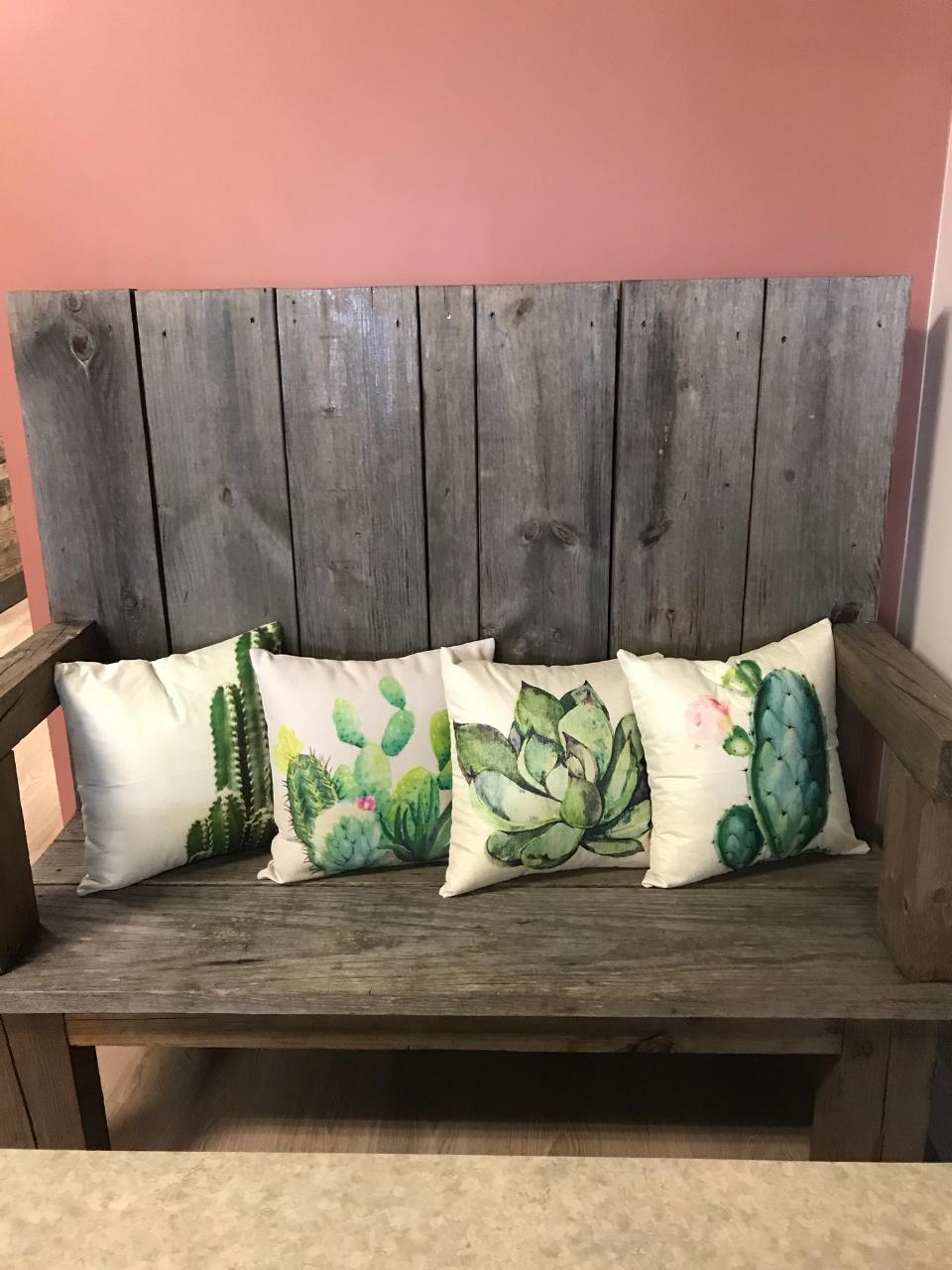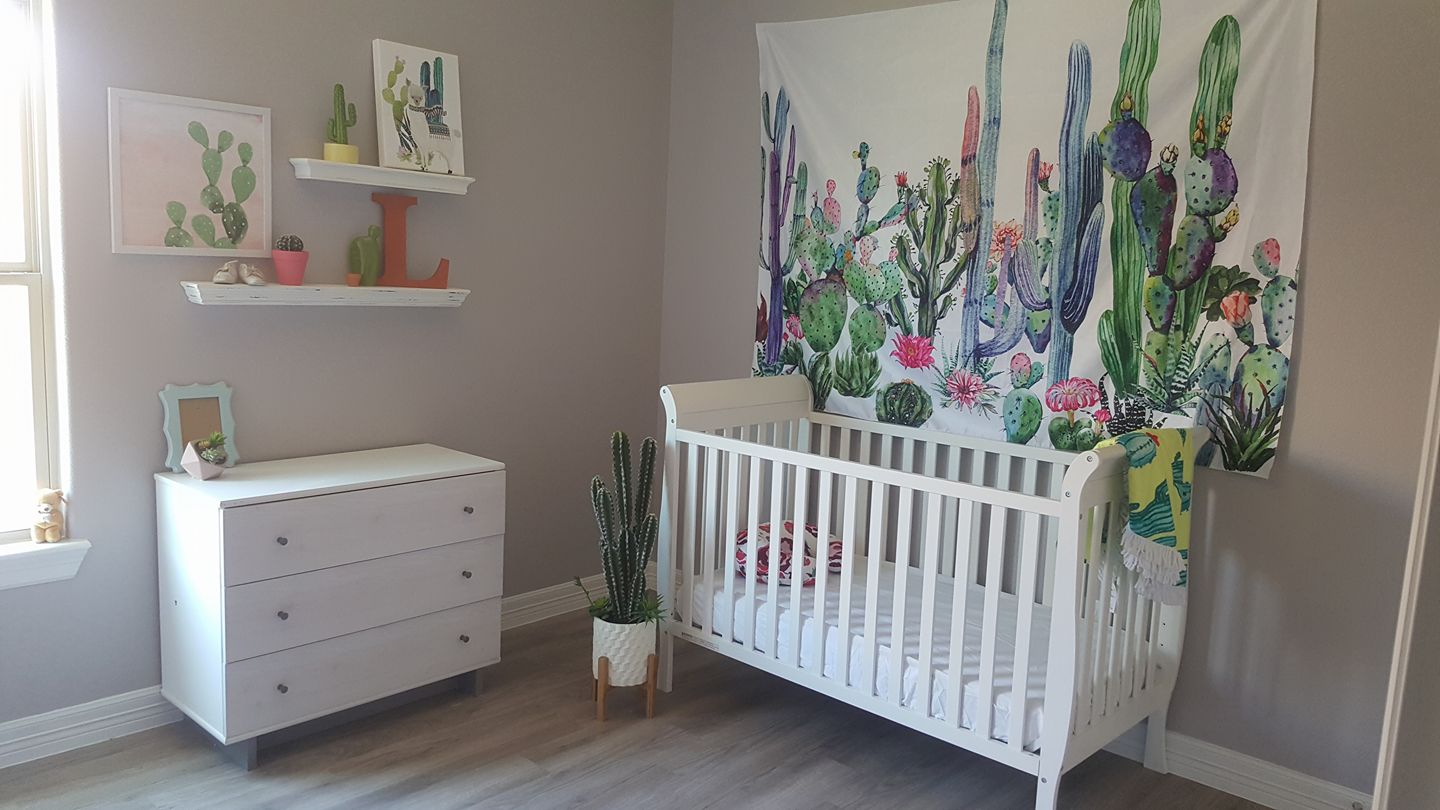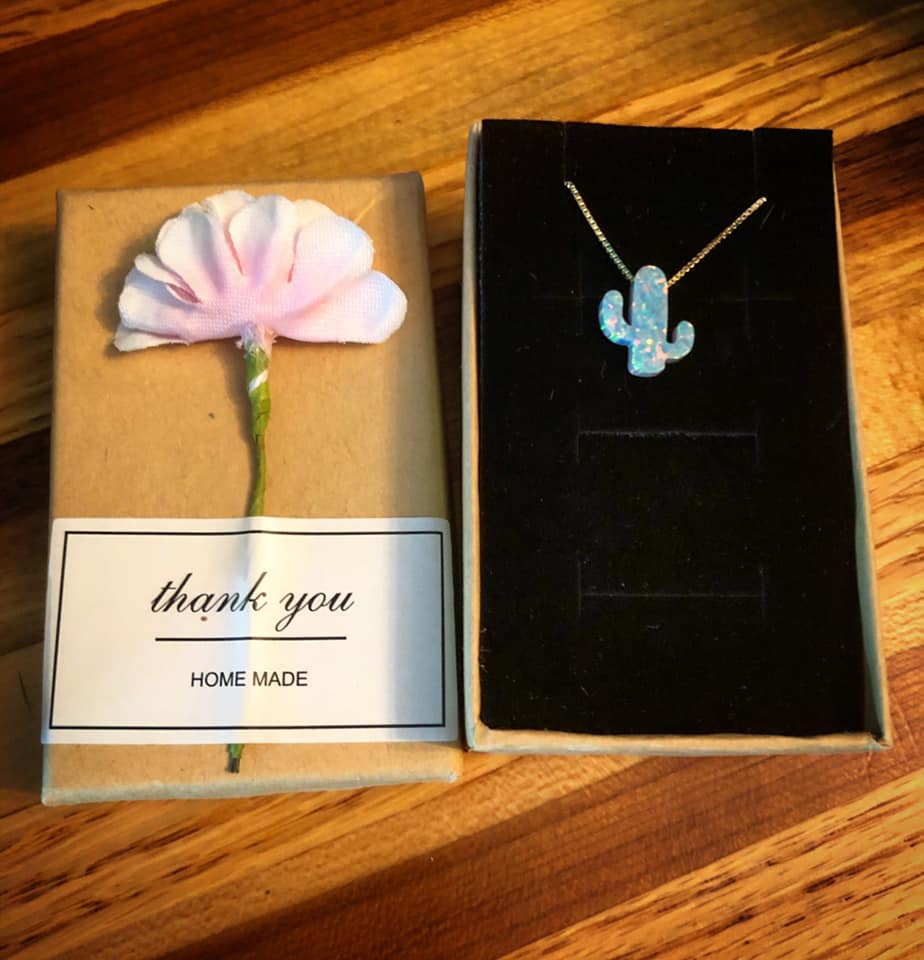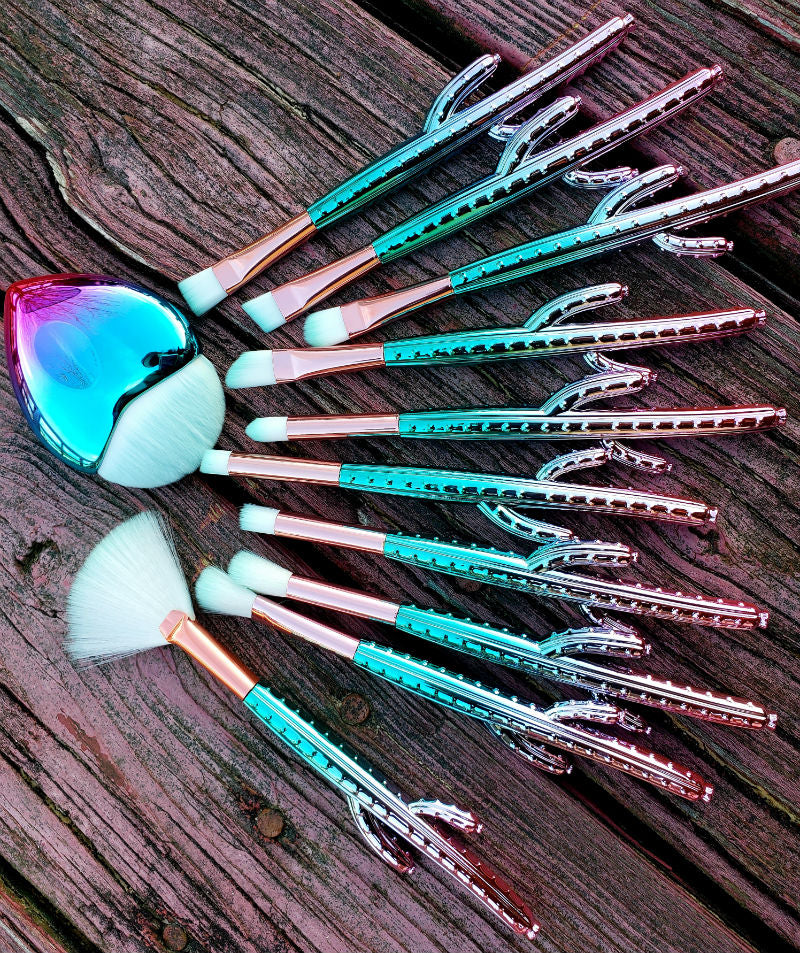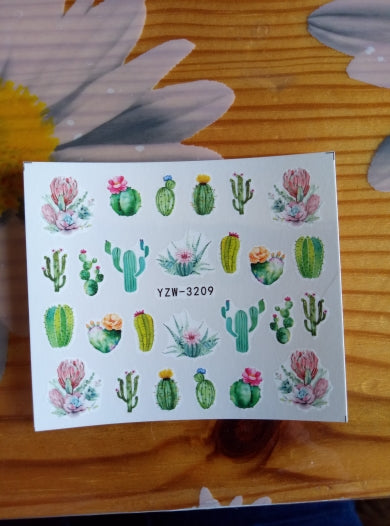Easy Steps on How to Grow and Care for Jade Succulent Plants

Imagine a plant so tough it thrives on little attention, and so appealing it turns any space into a green haven.
Welcome to the world of jade succulents. With their green, coin-shaped leaves and hardy nature, jade plants are a pleasant addition to any home or garden.
Whether you're a seasoned gardener or just starting out, jade succulents offer beauty, charm, and simplicity.
In this jade plant care guide, we'll share easy steps to help your jade succulent thrive. Get ready to be surprised by their lasting beauty and easy upkeep.
Explore the wonderful world of jade plants and see why they are the great choice for every gardener!
Getting Started with Jade Succulents
Choosing the Right Jade Plant Variety
Your journey with jade succulents starts with picking the right type. There are many unique succulent varieties, each with its own look and charm.
For something different, try the Crassula ovata ‘Hobbit’ or ‘Gollum’. These types have long, tube-shaped leaves that look like little fingers, giving them a fun look..

Another interesting choice is the Crassula ovata ‘Tricolor’, which has leaves with creamy white and pink splashes.
No matter which one you pick, make sure it fits your home’s light and temperature, as well as your style.
Understanding Jade Plant Basics
Jade succulents are easy to care for, making them great for both new and experienced plant lovers. So knowing a little about what they need will help your plant stay healthy for years.
Jade plants come from the dry areas of South Africa, so they store water in their leaves to survive droughts. This makes them perfect for indoor spaces where watering might not always be regular.
One important thing to know about jade plants is how they grow. They grow slowly and can reach up to three feet tall indoors, though they can be taller out in nature.
With their strong, woody stems and shiny leaves, they look like small trees. Pruning and good care can make them even more attractive.
Jade plants are sensitive to changes in their surroundings. They like a stable, warm spot with lots of indirect sunlight. Sudden changes in temperature or light can stress them out, causing leaves to drop or growth to slow down.
Keeping their environment steady helps them stay healthy and happy.
New to growing jade succulents? Patience is key. These plants treat you with long-lasting beauty if you care for them well. Choose the right type and learn their basic needs, and you'll be a jade plant expert in no time.
Choosing the Right Pot and Soil for Your Jade Plant
When picking a pot for your jade succulent, size and material are important. Your jade plant needs a pot with enough space for roots to grow and good drainage to stay healthy.
Size: Choose a pot that's just a bit bigger than your jade plant's root ball. A pot that's too big can hold too much water and cause root rot, while one that's too small can limit growth. Look for a pot with about an inch or two of space around the roots.
Material: Terra cotta pots are great for jade succulents because they allow air to flow through and help get rid of extra moisture, similar to the plant’s natural environment.
If you prefer a different look, ceramic pots with drainage holes work well too, as long as they let water drain properly so they don't hold too much moisture.
Choosing the Right Jade Plant Potting Mix
The soil mix for jade plants is very important. Jade plants need well-draining soil to prevent water from sitting around the roots, which can cause root rot and other problems.
Jade Plant Soil Mix: You can use a store-bought cactus or succulent soil mix. These are made to drain quickly and have the right nutrients. They usually include sand, perlite, and organic matter, which are perfect for jade succulents.
DIY Soil Mix: If you want to make your own soil mix, mix together equal parts of regular potting soil, coarse sand, and perlite. This will help with drainage and keep just enough moisture for the roots. You can also add a little pumice or crushed granite to improve drainage and airflow.
Soil pH: Jade plants do best in slightly acidic to neutral soil with a pH between 6.0 and 7.0. Most store-bought succulent mixes are fine, but if you choose to make your own soil, it's a good idea to check the pH to make sure it's right for your plant.
So, choosing the right pot and soil for your jade succulent is key to keeping it healthy and happy. Pick a pot that’s the right size and material, and use a well-draining soil mix. This will help your jade plant grow strong and beautiful.
How Much Sunlight Does Your Jade Plant Need?
What are the sunlight requirements for Jade plants? For your jade plant to do well, it needs plenty of light. Aim for four to six hours of sunlight each day. Jade plants love bright light and can even handle some direct sunlight. This helps them grow strong and keep their shiny, green leaves.
If your jade plant isn’t getting enough light, it might start to stretch and get leggy. If you see this happening, it’s a sign that your plant needs more light. But be careful with too much direct sunlight, as it can burn the leaves. Finding the right balance is important for a healthy jade plant.
Indoor vs. Outdoor Jade Plant Light Conditions
Indoor Light Conditions:
Outdoor Light Conditions:
If you're growing your jade succulents outdoors, pick a spot that gets lots of indirect sunlight. Morning sun is best because it’s not too strong. A place with filtered sunlight or some afternoon shade works beast.
If you're moving your jade plant from indoors to outdoors, do it slowly. Start in a shaded area and gradually let it get more sunlight over a few weeks to help it adjust and prevent sunburn.
To sum up, giving your jade succulent the right amount of light is essential for its health and growth. Whether it’s growing indoors or outdoors, make sure it gets enough balanced light to help it flourish and look its best.
Manage Watering for Jade Succulents: How Often Should You Water?
Keeping your jade plant healthy means watering it just right.
Overwatering can cause root rot, which is very harmful to the plant. Signs of overwatering include yellow leaves, mushy stems, and a weak, droopy appearance. Underwatering, on the other hand, leads to dry, shriveled leaves and stunted growth.
Here’s a simple rule: wait until the soil is completely dry before watering again. In the growing season of spring and summer, you might need to water every 2 to 3 weeks.
In the cooler months, water less often, probably about once a month. To check if it’s time to water, stick your finger about an inch into the soil. If it’s dry, it’s time to water.
When you water your jade plant, make sure to water it thoroughly. Water until you see it coming out of the drainage holes at the bottom of the pot.
Then, throw away any extra water that collects in the saucer. This helps the roots grow deep and strong. Follow this jade plant watering guide for the best results!
To master watering succulents:
-
Pay regular attention.
-
Regularly check the soil moisture.
-
Adjust your watering schedule based on your plant’s needs and environmental conditions.
Seasonal Watering Schedule for Jade Plants: Summer vs. Winter
Summer Watering Tips: In the summer, jade succulent plants are growing faster and they need more water. Even so, still let the soil dry out completely before watering again.
And, since the soil dries out quicker in warm weather, be sure to check it more often. Also, it's best to water in the early morning so your plant can absorb the moisture before the heat of the day.
Winter Watering Tips: In the lower temperature days of winter, jade plants slow down and need less water. Water them much less often, about once a month or even less.
Since the soil stays moist longer in cooler temperatures and shorter days, it's better to underwater rather than overwater during this time.
To water jade succulents right, understand their seasonal needs and keep an eye on the soil moisture. Change your watering based on the season. More in summer and less in winter!
Proper Jade Plant Drainage Techniques
Ideal Jade Plant Temperature and Humidity Conditions
Best Humidity Levels for Succulents
Jade succulents like warmth, similar to their native South African environment. Keep indoor temperatures between 65°F and 75°F (18°C to 24°C) during the day. They can handle cooler temperatures at night but not below 50°F (10°C).
In winter, protect your jade plant from cold drafts and sudden temperature changes. Keep it away from chilly windows and direct air from heaters or air conditioning. If your jade plant has been growing outside, bring the plant indoors before the first frost.
Managing Jade Plant Humidity Levels for Prime Growth
Jade succulents prefer low to moderate humidity, which is usually fine in most homes (30% to 50%). If your home is very humid, you can use a dehumidifier to lower it.
In very dry places, especially in winter when indoor heating dries out the air, you can increase humidity a little bit. Simply place a shallow tray with water and pebbles near your jade plant to help with this, but, to avoid overwatering jade plants don’t let the pot sit in the water.
In closing, keeping the right temperature and humidity is key to a happy jade plant. A warm, stable environment with the right humidity will help your jade succulent thrive.
Feeding Your Jade Plant: Fertilizer Tips
Choosing the Right Jade Plant Fertilizer
Jade succulents don’t need a lot of feeding, but a little fertilizer can help them grow better. Use a fertilizer made for succulents and cacti.
Look for one with a balanced mix, like 10-20-10 or 5-10-5. Slow-release fertilizers work well too. Always mix the fertilizer with water at half the strength to avoid hurting the roots.
When and How to Fertilize Your Jade Plant
Fertilize your jade plant once a month during spring and summer when it’s actively growing. In fall, cut back on feeding. Always water the plant well before you fertilize to even it out and to avoid burning the roots.
Apply the diluted fertilizer to the soil, not the leaves. If you’re using a slow-release fertilizer, mix it into the top layer of soil according to the instructions.
In summary, using the right jade plant fertilizer and feeding your plant at the right times helps it grow strong and healthy. Choose a balanced fertilizer and apply it carefully for the best results.
Jade Plant Pruning and Shaping
Why Pruning is Important for Jade Plants
Pruning your jade plant helps keep it healthy and looking good. Regularly trim it to control its size, encourage fuller growth, and prevent it from getting leggy.
Removing dead or sick branches also helps stop jade plant pests and diseases. Plus, pruning lets you shape the plant, making it a standout feature in your home or garden.
Step-by-Step Guide to Pruning Jade Jade Plants
-
Get Your Tools Ready: Use sharp, clean scissors or pruning shears. Sterilize them with rubbing alcohol to keep germs away.
-
Pick the Right Time: Prune in spring or early summer when the plant is growing well and can recover quickly.
-
Check Your Plant: Look for dead or yellow leaves, leggy branches, and any branches that cross each other. Decide how you want your plant to look.
-
Remove Dead Parts: Cut off dead or sick branches, making sure to cut back to healthy areas. Dispose of the cuttings properly.
-
Shape the Plant: Trim long, leggy branches to encourage fuller growth. Make cuts just above a leaf to help new growth appear. Also, trim any branches that are too tall or wide to keep or make a more compact shape.
-
Thin Out Crowded Areas: Remove some inner branches to help air and light reach all parts of the plant.
-
Watch and Care: After pruning, keep an eye on your plant for new growth or any signs of stress. Continue regular pruning to keep it healthy and well-shaped.
By following these steps, your jade plant will stay healthy and look great. Regular pruning keeps it vibrant and well-shaped.
Jade Plant Propagation: How to Grow Your Collection
Growing more jade plants is easy and fun! You can start new plants using leaves or cuttings. These simple methods work well and give you healthy new plants.
Here's how to grow new jade plants from leaves:
-
Choose a Leaf: Pick a healthy, plump leaf and gently twist it off the stem.
-
Let It Dry: Lay the leaf on a dry shaded surface for a few days so the end can callous over.
-
Prepare the Soil: Use a well-draining succulent or cactus mix in a shallow tray or small pot. Moisten the soil lightly.
-
Plant the Leaf: Place the calloused end of the leaf on the soil, pressing it gently.
-
Care for the Leaf: Put the tray or pot in bright, indirect sunlight. Keep the soil lightly moist. In a few weeks, you should see roots and a new plantlet forming.
Here's how to grow new jade plants from cuttings:
-
Pick a Stem: Choose a healthy stem that's about 3-4 inches long and has leaves.
-
Let It Dry: Place the cut end of the stem in a dry, shaded spot for a few days to callous over.
-
Prepare the Pot: Fill a pot with well-draining succulent or cactus soil and make a small hole in the soil.
-
Plant the Cutting: Put the calloused end of the stem into the soil and gently press it in.
-
Care for the Cutting: Place the pot in bright, indirect sunlight and water lightly. In a few weeks, roots should start to grow.
Propagating jade succulents is simple and fun. Just follow these easy steps to grow new plants from leaves or cuttings.
Pest Control for Succulents
Here's a Quick Guide to Spotting Common Jade Plant Pests:
-
Mealybugs: Tiny, white, fluffy bugs hiding in the cracks of leaves and stems. They cause yellowing and wilting.
-
Spider Mites: Very small, red or brown pests that create tiny webs and make leaves look spotted or yellow.
-
Scale Insects: Small, brown or black bumps on stems and the undersides of leaves. They weaken the plant and cause leaves to drop.
How to Deal with Mealybugs Naturally:
-
Rubbing Alcohol: Use a cotton swab dipped in rubbing alcohol to gently wipe away the mealybugs. Do this every few days.
-
Neem Oil: Mix neem oil with water and spray it on the affected areas. This helps stop pests from reproducing.
Spider Mite Treatment:
-
Water Spray: Use a strong spray of water to wash off the mites, especially on the underside of leaves.
-
Insecticidal Soap: Spray a mild insecticidal soap on the plant, and repeat as needed.
Scale Insect Treatment:
-
Manual Removal: Gently scrub off scale insects with a soft brush or cloth.
-
Horticultural Oil: Apply horticultural oil to cover and smother the insects, following the instructions on the product.
To Prevent Pests:
-
Sterilize Tools: Clean your tools before and after use.
-
Quarantine New Plants: Keep new plants away from others for a few weeks to check for pests.
-
Regular Inspections: Check your plants often for any early signs of pests.
Spotting and treating pests with natural methods will help keep your jade plant healthy. Stay alert and act quickly to keep pests away.
How to Spot Common Jade Plant Diseases
-
Root Rot: Look for yellow leaves, slow growth, and mushy brown roots. This happens from overwatering.
-
Powdery Mildew: White, powdery spots on leaves and stems, usually from high humidity.
-
Bacterial Soft Rot: Soft, mushy spots on leaves and stems that may smell bad.
How to Stop Common Jade Plant Diseases
-
Root Rot: Yellow leaves, slow growth, and mushy brown roots are signs of overwatering. Let the soil dry out completely between waterings.
-
Powdery Mildew: White, powdery spots on leaves and stems often come from high humidity. Ensure good airflow and reduce humidity.
-
Bacterial Soft Rot: Soft, mushy spots on leaves and stems that might smell bad. Remove affected parts and improve ventilation.
Repotting Jade Succulents: When and How
Signs That Your Jade Plant Needs Repotting
-
Roots growing out of the drainage holes
-
Soil drying out too quickly
-
Plant becoming top-heavy and tipping over
-
Slowed growth despite regular care
A Step-by-Step Guide to Jade Plant Repotting
-
Choose the Right Succulent Containers: Pick a pot that is one size bigger than the current one, with good drainage holes. Terra cotta pots are great because they let the soil breathe and prevent water from sitting in the pot.
-
Prepare the New Soil: Use a well-draining soil mix made for succulents. You can make your own by mixing equal parts potting soil, coarse sand, and perlite. This helps the plant grow well.
-
Remove the Plant: Gently take the jade plant out of its current pot. Tip the pot on its side and tap it to loosen the soil. Lift the plant carefully, holding the base to avoid hurting the roots.
-
Inspect the Roots: Look at the roots for any signs of rot or disease. Trim off any dead or mushy roots with sterilized scissors. Healthy roots are white or light tan and feel firm.
-
Prepare the New Pot: Put a layer of soil in the bottom of the new pot. Place the plant in the center, making sure it sits at the same depth as before.
-
Fill in the Soil: Add soil around the roots, pressing gently to remove air pockets. Leave a little space at the top of the pot for watering.
-
Water Sparingly: Water the plant lightly after repotting to settle the soil. Let the soil dry out before watering again to avoid root rot.
-
Placement: Put the repotted jade plant in a spot with bright, indirect sunlight. Keep it out of direct sun for the first few days to help it adjust.
-
Monitor and Care: Keep an eye on the plant for any signs of stress. It might take a few weeks to get used to its new pot. Continue regular care and enjoy your thriving jade plant!
Repotting your jade plant can help it grow better and give its roots more space. Follow these steps to keep your jade succulent healthy and beautiful in your home.
Seasonal Jade Plant Care Tips for Year-Round Health
Summer Care: Maximizing Growth and Sunlight
During the summer, jade succulents grow actively. Here’s how to give them the best care.
-
Maximize Sunlight Exposure: Jade plants thrive in bright, indirect sunlight. During the summer, place your jade plant where it gets at least 4-6 hours of bright, indirect sunlight daily. An east or west-facing window works well.
-
If you’re moving your jade plant outdoors, gradually increase its light exposure to prevent sunburn.
-
Increase Watering Frequency: With more heat and sunlight, your jade plant will need more water. Check the soil often and water thoroughly when the top inch is dry.
-
Ensure the pot has good drainage to avoid waterlogging.
-
Provide Adequate Ventilation: Good airflow prevents fungal infections and pests. Indoors, use a small fan for better ventilation. Outdoors, place the plant where it gets natural breezes.
-
Fertilize for Growth: Summer is the perfect time to feed your jade plant. Use a balanced, water-soluble fertilizer every 4-6 weeks to support its growth.
Winter Care: Protecting Your Jade Plant from Cold
Winter can be tough for jade succulents. Here’s how to keep them healthy during the colder months:
-
Reduce Watering: In winter, jade plants need less water because they enter a dormant phase. Only water when the soil is completely dry to prevent root rot.
-
Maintain Adequate Light: Jade plants still need bright, indirect sunlight. Place them in the sunniest spot available, like a south-facing window. If needed, use a grow light to supplement natural light.
-
Protect from Cold Drafts: Keep your jade plant away from cold drafts and temperatures below 55°F (13°C). Avoid placing it near windowsills, doors, and vents.
-
Monitor Humidity Levels: Indoor heating can lower humidity, which can stress your plant. Use a humidity tray or a room humidifier to maintain moderate humidity.
-
Avoid Fertilizing: Don’t fertilize in winter since jade plants are not actively growing. Wait until spring growth starts to start feeding again.
By changing how you care for your jade plant with the seasons, you can keep it healthy all year. Knowing what your jade succulent needs in summer and winter helps you create the best environment for its growth and well-being.
Common Problems: Jade Plant Troubleshooting
Yellow Leaves: What They Mean and How to Fix Them
Yellowing leaves can be a common issue for jade plant owners, signaling various underlying problems.
-
Overwatering: Yellow leaves are often due to overwatering. Make sure the soil dries out completely before watering again. Check that your pot has good drainage.
-
Nutrient Deficiency: Yellowing can also mean your plant needs nutrients. Use a balanced fertilizer during the growing season to help your jade plant get the nutrients it needs.
-
Poor Lighting: If your jade plant isn’t getting enough light, its leaves may turn yellow. Move your plant to a brighter spot with more indirect sunlight.
Dropping Leaves: Causes and Solutions
Leaf drop can be worrying, but figuring out the cause can help your jade plant get healthy again.
-
Stress from Relocation: Jade plants may drop leaves if they’re moved suddenly. Gradually get your plant used to a new spot to reduce stress.
-
Underwatering: Not watering enough can cause leaf drop. Make sure you water your jade plant properly, especially during its growing season.
-
Temperature Fluctuations: Changes in temperature or cold drafts can make leaves fall off. Keep your jade plant in a spot with stable temperatures.
Fertilize Appropriately: During the growing season, feed your jade plant with a balanced fertilizer to support healthy, compact growth.
Avoid over-fertilizing, which can lead to weak, leggy stems. A proper jade plant fertilization routine ensures healthy growth.
Leggy Growth: How to Encourage a Bushier Plant
Leggy growth, with long and thin stems, usually means your jade plant is trying to get more light.
Increase Light Exposure: Make sure your jade plant gets plenty of bright, indirect sunlight. If it’s not getting enough light, use a grow light to help. More light helps prevent leggy growth.
Prune Regularly: Trim back long, spindly stems just above where leaves grow. This helps the plant grow fuller and bushier.
Rotate the Plant: Turn your plant regularly so all sides get equal light. This stops it from leaning towards the light source.
Fertilize Appropriately: Feed your plant with a balanced fertilizer during the growing season to help it grow strong and compact. Don’t over-fertilize, as this can cause weak, leggy stems.
Fixing common jade plant problems with specific jade plant care keeps your succulent healthy and vibrant.
Regularly check and adjust your care routine to prevent issues and help your jade plant thrive, adding beauty and greenery to your space. For detailed help, look at a jade plant care guide.
Recap: Key Points to Remember

Caring for jade succulents is both easy and fun. Choosing the right type of jade plant and knowing its basic needs helps it grow well. Picking the right pot and soil mix is important to keep your plant healthy and happy.
Sunlight is key for your jade plant, so make sure it gets enough light whether it's inside or outside. Water it properly, adjust care with the seasons, and keep the right temperature and humidity. Use the right fertilizer and prune it correctly to keep your jade plant healthy and looking great.
Propagating jade plants is a fun way to grow your collection. Preventing and treating pests and diseases keeps your plants safe.
Regular repotting and seasonal care keep them healthy all year. Fixing problems like yellow leaves or leggy growth quickly helps your plants stay strong.
Your Journey with Jade Succulents: Final Thoughts and Encouragement
Growing jade succulents is like creating a living work of art. These resilient plants are great for both beginners and experienced gardeners. With a little patience and care, your jade plants will thrive and bring vibrant green to your home or garden.
Propagation is a fun way to grow your collection. Knowing how to handle pests and diseases keeps your plants safe. Regular repotting and seasonal care keep them healthy all year. If you notice issues like yellow leaves or leggy growth, you can fix them quickly.
As you care for your jade plants, remember each one is unique. Enjoy the process, learn from any challenges, and celebrate your successes. Your hard work will pay off with healthy, vibrant plants that brighten your space and bring you joy.
Happy gardening!













